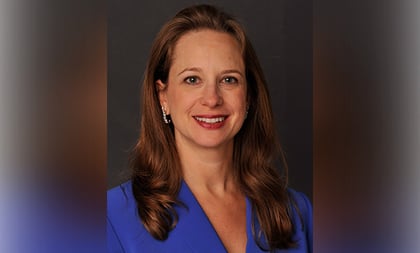The way Certified Financial Planner Carol Petrov sees it, women in the advisory business “are given only two options: a financial advisor who hunts and kills for their meat, or somebody’s assistant with a steady paycheck.”
Petrov, the vice president of Kendall Capital, started out as an advisor, switched after seven years to be a brokerage assistant (which she did for six years) and then returned to her FA career when she joined Kendall Capital in Rockville, Maryland, six years ago. With $310 million in assets under management, the RIA’s client focus is Middle-Class Millionaires, and they’ve trademarked the moniker.
Petrov, 48, specializes in retirement planning for seniors, which is often challenging because most of the firm’s older clients became millionaires by dint of saving all their lives and now “worry that if they stop working, they won’t be able to pay their bills.”
In the interview, Petrov, who grew up in the Maryland suburbs and earned a B.S. from George Washington University’s business school, talks about what drove her to give up advising and work instead as a client service associate at Morgan Stanley. The 2008-2014 stint was not fulfilling, as she explains.
To help both her and other women to an improved experience, she urged the firm to offer, as an alternative to evolving into an FA, financial planning jobs with flexible hours and steady pay that would allow for a better work-family balance. That appeal proved to be in vain.
The wirehouse firm still does not offer such opportunity, she says, but it has two salaried programs for those who do aspire to become FAs: Wealth Advisor Associate, a diversity initiative leading to the Financial Advisor Associate Program, which trains people with no financial or sales background.
“Morgan Stanley offers several career paths to employees within the Field Service Organization,” a Morgan Stanley spokesperson said. “The [two noted above] are designed to guide employees through extensive training and development to help them succeed as financial advisors.”
ThinkAdvisor recently interviewed Petrov, who was speaking by phone from Rockville. She discussed her detoured career trajectory and her key goal as an advisor: “To help clients have a good experience. I want [them] to be happy and come back for more” and, she says, “refer their friends.”
Here are highlights from our conversation:
THINKADVISOR: Your firm specializes in serving Middle-Class Millionaires, a term that Clark Kendall, president and CEO, trademarked. Do such clients feel rich and have no worries about money?
CAROL PETROV: Quite the contrary. The majority have worked and saved by living within or below their means. They feel they have to continue to work and save, and that their retirement is the security of knowing they can keep living the way they’ve been living. So they feel just as insecure as before [they became millionaires] and worry that if they stop working, they won’t be able to pay their bills.
Did President Trump’s Tax Cuts and Jobs Act help Middle-Class Millionaires?
No. That tax package had a huge [negative] impact on them. It really wreaks havoc on the higher middle class, whose tax rates tend to be around 20%-22%.
Just what was the change?
The state and local tax — SALT — deduction was capped at $10,000 [$5,000 for married filing separately]. Most of our clients have property taxes alone that are well over that. So between [losing] the state income tax deduction and the property tax deduction, some lost a good two or three times what they used to be able to deduct.
Will President-elect Joe Biden’s tax proposal benefit Middle-Class Millionaire clients?
Thus far, he’s proposed raising taxes on income above $400,000. That’s far ahead of most of our clients. Most have $400,000, but they’re not earning that amount [or more]. So they’ll stay in the bracket they’re in now and remain hopeful that the SALT [change] will be reversed.
How did you get interested in working in financial services?
In 2000, I was in customer service as the manager of a restaurant in Bethesda and figuring out what I should do next. At the restaurant, I met three middle-aged [male] UBS financial planners who said I had the right personality to be an advisor. I wasn’t interested in stocks. They said, “No, no — not stocks. Financial planning.” I said, “What’s that?” And that’s how I got into financial services.
What’s your key strength that’s helped you in your work?
My ability to relate to people, to listen. As a financial planner, you’re working to help clients have a good experience. To this day, I feel like I’m still working for tips, [as in customer service]: I want my clients to be happy and come back for more, and refer their friends.
Your first job in the industry was financial advisor at Ameriprise Financial Services. From there, after a brief stint as an FA at First Financial Group, you joined Morgan Stanley as a registered service associate. Wasn’t that a step down on your career ladder?
It was. As a woman in this business, you’re given two options: financial advisor who hunts and kills for their meat — you get clients and make commissions — or else, you’re somebody’s assistant with a steady paycheck and regular hours.
Was steady pay and set hours necessary for your lifestyle?









 December 15, 2020 at 04:25 PM
December 15, 2020 at 04:25 PM











